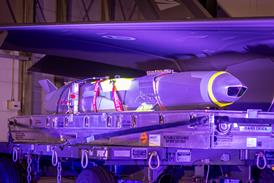An effort to update commonly used definitions of icing accumulation used by pilots and controllers since 1968 is temporarily on ice after what federal officials are calling a flawed rollout of the new terms in February.
The changes had been made partially in response to US National Transportation Safety Board (NTSB) recommendations from the icing-related 1994 crash of an ATR 72 near Roselawn, Indiana. The recommendations called on the Federal Aviation Administration (FAA) to make its definition of severe icing compatible with the "published definition" of the term, and working groups later developed quantitative rather than qualitative definitions to be used.
The legacy, qualitative definitions include "trace, light, moderate and severe" icing levels, where "severe" calls for an "immediate flight diversion" because the aircraft's de-icing or anti-icing equipment would "fail to reduce or control the hazard".
The update, published in the Airman's Information Manual (AIM) in February, included quantifiable accumulation rates for each level of icing, plus the addition of a "heavy" accumulation rate.
The definition of "severe" had also been modified to include a condition where "ice accumulates in locations not normally prone to icing, such as areas aft of protected surfaces" In the Roselawn accident, a ridge of ice had accumulated behind the wing's pneumatic deicing boots, causing a "sudden and unexpected aileron hinge moment reversal", according to the NTSB.
However in the 22 March notice, the FAA says that after a meeting with the National Air Traffic Controllers Association (Natca) and others earlier this month, it decided to rescind the update.
"A decision was made on March 6 during a meeting of [FAA offices] to rescind the recent AIM change and the associated [general notice] that redefined icing levels in the pilot controller glossary since that change was not fully coordinated," the FAA states. "Numerous directives, advisory circulars, and automation systems were not concurrently updated."
The agency says that the new icing intensity levels in the pilot-controller glossary are "cancelled immediately" and that icing levels "will revert back to trace, light, moderate and severe".
Source: Air Transport Intelligence news























